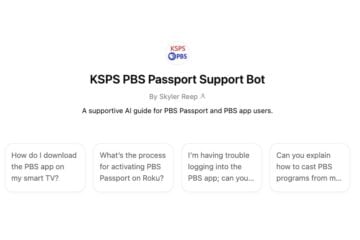PBS and stations look to improve use of metadata in streaming-centric world

PBS SoCal
"Variety Studio: Actors on Actors" is co-produced by PBS SoCal and "Variety" magazine. The program experimented with metadata this year using guides PBS created.
PBS is spearheading efforts to help stations reach more viewers by improving their metadata, an area in which the system is lagging behind the commercial media juggernauts.
Metadata, which is data that describes other data, is critical to delivering accurate results in online searches. With its Metadata for Content Discovery initiative, PBS aims to teach public media staffers about metadata and make local programs more discoverable by search engines.
A metadata case study at PBS SoCal in Los Angeles offers lessons for the rest of the system. With PBS’ guidance, the station launched an experiment last year to improve the discoverability of Variety Studio: Actors on Actors, co-produced by PBS SoCal and Variety magazine. Each episode of the program, which launched in 2014, brings together actors for one-on-one conversations about their films.
Before PBS SoCal began its experiment, a Google voice search for broadcast times for upcoming episodes prompted the response “Sorry, I couldn’t find any listings on that show.” Search engines pull information from public databases like IMDb, so incomplete or inaccurate metadata can limit a program’s discoverability.
“As soon as you hear Google say ‘I have no idea what you’re talking about,’ and you’ve got a show that’s been on the air for 12 or 13 seasons, you go, ‘Uh oh, something is wrong,’” said Michelle Merker, manager of programming partnerships and distribution for PBS SoCal.
But after tweaking the program’s metadata, voice searches for Variety Studio broadcasts showed accurate times in local markets. Improved metadata also helped Google display more information about the program in the “knowledge panel,” the box of summary information on the right side of Google pages.

“We have so much great content,” Merker said, but it doesn’t help audiences “if it can’t be found.”
Metadata is extremely important to public broadcasting, which needs to do more to improve its data capabilities, according to PBS CTO Rhonda Holt.
“Let’s be honest. We have a lot of catching up to do in order to make sure that our content is available and findable on the platforms of today and tomorrow,” Holt said in October at PBS TechCon. “The key to catching up when you’re behind is identifying the solutions that the marketplace can readily provide, leveraging industry innovation where possible and tweaking it to suit your unique needs.”
Guides to help stations
Holt, who became PBS’ technology chief in May, has identified several pillars that need repairs, with metadata as a centerpiece. But such work isn’t easy. Public media is tasked with doing as much as possible with fewer resources. CPB has said that stations sorely need infrastructure improvements. These challenges make pubcasters less able to leverage tools that are more standard within other companies, primarily streaming services.
Commercial media, on the other hand, has continued to make significant advances on metadata and don’t appear to be slowing down. Netflix has made large strides in improving personalization and viewing recommendations, grouping shows under “campy, “feel-good” and other labels. Public media has not optimized this kind of technology, but steady improvements could lead to similar personalizations for viewers who tune into PBS programs on Passport.
The key to using metadata is understanding its proper context, said Olga Howard, an information architect who manages PBS’ Metadata for Content Discovery program. Search engines look for standardized terms and definitions, including “series title,” “approximate length,” “release date” and “talent.” Howard advises that stations be familiar with the Entertainment Identifier Registry, a global ID system for a variety of programs, and Nielsen’s Gracenote, which curates metadata by theme, genre, mood and keywords.
PBS SoCal’s team used guides created for the Public Media Metadata Co-op, PBS’ metadata website. This includes the Content Discovery Portfolio, which lists where audiences watch content. PBS SoCal also used Crosswalks, a tool that explains how services use different terms for similar definitions. For example, while PBS Digital’s media manager uses the terms “short description” and “long description,” IMDb uses “plot summary” and “synopsis.”
Three PBS SoCal employees, including Michelle Merker, are members of PBS’ metadata steering committee. Formed in 2019, it includes 16 employees at public media stations and organizations such as the Independent Television Service, the WNET Group in New York, Wyoming PBS and Nebraska Public Media. The committee is working to help more stations improve their use of metadata.
Holt said she wants to see PBS SoCal’s experiment expand to other stations. She also wants to help stations automate metadata entry whenever possible, which can improve workflows and free up time for analyzing viewership.
“The problem itself is pretty old, and metadata as a concept is pretty old,” Holt said. “What’s different now is that there’s an appreciation for the value of all the data we have.”






